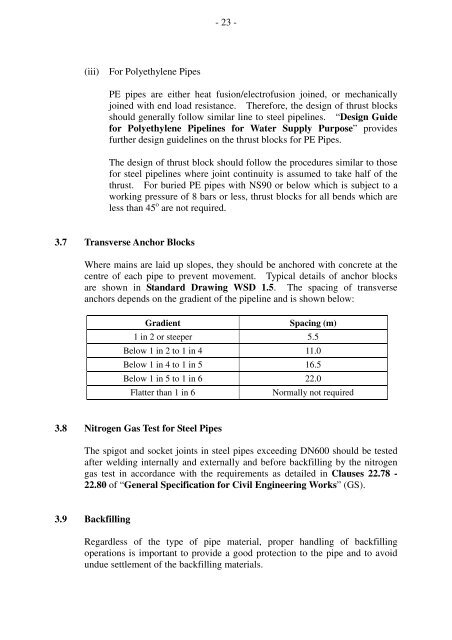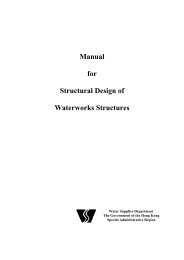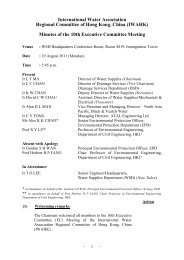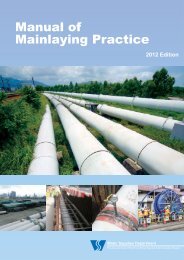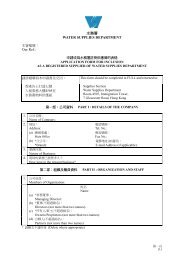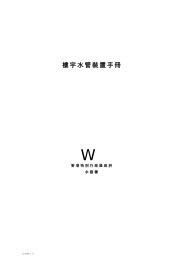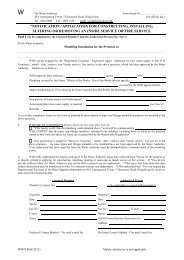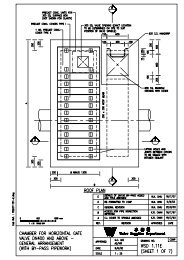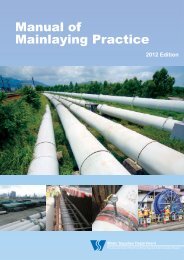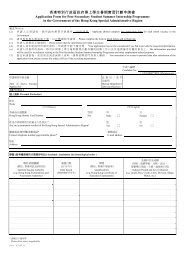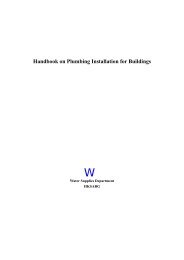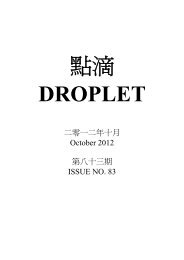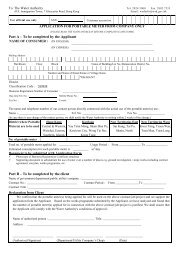PDF PDF.
PDF PDF.
PDF PDF.
- No tags were found...
Create successful ePaper yourself
Turn your PDF publications into a flip-book with our unique Google optimized e-Paper software.
- 23 (iii)For Polyethylene PipesPE pipes are either heat fusion/electrofusion joined, or mechanicallyjoined with end load resistance. Therefore, the design of thrust blocksshould generally follow similar line to steel pipelines. “Design Guidefor Polyethylene Pipelines for Water Supply Purpose” providesfurther design guidelines on the thrust blocks for PE Pipes.The design of thrust block should follow the procedures similar to thosefor steel pipelines where joint continuity is assumed to take half of thethrust. For buried PE pipes with NS90 or below which is subject to aworking pressure of 8 bars or less, thrust blocks for all bends which areless than 45 o are not required.3.7 Transverse Anchor BlocksWhere mains are laid up slopes, they should be anchored with concrete at thecentre of each pipe to prevent movement. Typical details of anchor blocksare shown in Standard Drawing WSD 1.5. The spacing of transverseanchors depends on the gradient of the pipeline and is shown below:GradientSpacing (m)1 in 2 or steeper 5.5Below 1 in 2 to 1 in 4 11.0Below 1 in 4 to 1 in 5 16.5Below 1 in 5 to 1 in 6 22.0Flatter than 1 in 6Normally not required3.8 Nitrogen Gas Test for Steel PipesThe spigot and socket joints in steel pipes exceeding DN600 should be testedafter welding internally and externally and before backfilling by the nitrogengas test in accordance with the requirements as detailed in Clauses 22.78 22.80 of “General Specification for Civil Engineering Works” (GS).3.9 BackfillingRegardless of the type of pipe material, proper handling of backfillingoperations is important to provide a good protection to the pipe and to avoidundue settlement of the backfilling materials.


